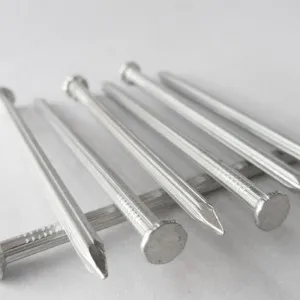Wire Screen for Concrete An Essential Element in Modern Construction
In the realm of construction, materials play a pivotal role in determining the strength, durability, and overall quality of structures. Among the various integral components used in concrete construction, wire screen, commonly known as wire mesh, stands out for its essential functions. This article explores the significance of wire screens for concrete applications, ranging from reinforcement to improving aesthetic appeal and functionality.
Understanding Wire Screen
Wire screen consists of a network of steel wires welded together to form a grid, typically measured in inches or millimeters apart. It comes in various gauges and dimensions to cater to different construction needs. The flexibility and versatility of wire screen make it suitable for a wide range of applications, including slabs, foundations, and walls.
Reinforcement Properties
The primary function of wire mesh in concrete is to provide reinforcement. Concrete is strong in compression but weak in tension. Therefore, when subjected to tensile stresses, concrete can crack or even fail. By incorporating wire screen into the concrete mix, builders can significantly enhance its tensile strength. The wire mesh acts as a framework that distributes loads evenly throughout the structure, helping to minimize cracking and enhance longevity.
Installation Process
Installing wire mesh in concrete is a straightforward process that can significantly improve the final product's performance. Before pouring the concrete, the wire screen is laid out in the formwork. It's important to position the mesh correctly, typically about halfway within the concrete slab, ensuring it can effectively carry tensile loads. After laying the mesh, concrete is poured over it, encapsulating the wires and allowing them to bond effectively.
wire screen for concrete

Applications Across Different Structures
Wire screens are extensively used in various concrete structures. In residential construction, they can be found in driveways, patios, and sidewalks, adding durability to surfaces that experience heavy foot or vehicle traffic. In commercial buildings, wire mesh reinforces floors and walls, safeguarding against potential structural failures. Moreover, in precast concrete applications, wire screen aids in the manufacturing process, ensuring that the final products maintain their integrity during transport and installation.
Aesthetic and Functional Design
Wire mesh is not just about strength; it also contributes to the aesthetic appeal of concrete structures. Decorative applications often utilize patterned wire mesh to create visually interesting surfaces. Architects and designers can manipulate wire screen designs to achieve various textures and finishes, adding character and uniqueness to a project. Additionally, wire mesh can be used in conjunction with other materials like glass or wood, allowing for innovative designs that cater to modern architectural trends.
Cost-Effectiveness
Incorporating wire screens into concrete projects is also a cost-effective solution. While the initial investment in wire mesh may seem significant, the long-term benefits are invaluable. Structures reinforced with wire mesh tend to require less maintenance and are less likely to suffer from costly repairs due to cracking or structural failure. Hence, the use of wire mesh can contribute to overall savings for builders and property owners, making it an economical choice in the long run.
Conclusion
In conclusion, wire screens for concrete represent a vital aspect of modern construction. They not only provide essential reinforcement that enhances the durability and strength of concrete structures but also contribute to aesthetic design and overall cost-effectiveness. As construction technologies continue to advance, the role of wire mesh will likely become even more integral in ensuring the longevity and functionality of buildings and infrastructure. By understanding and utilizing wire screens correctly, builders can construct safer, more resilient, and visually appealing structures that stand the test of time.

















